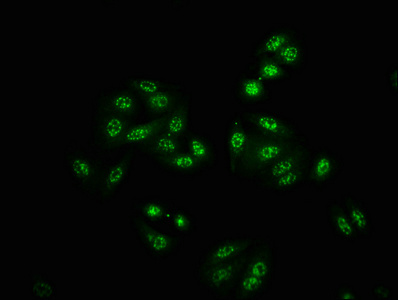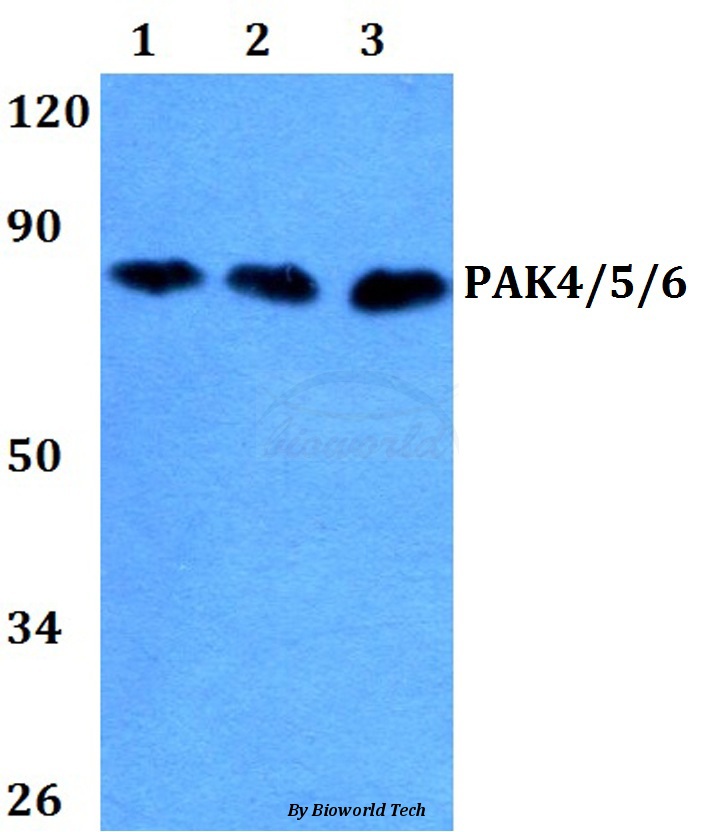
Western Blot Positive WB detected in 293 whole cell lysate(treated with Calyculin A or not) All lanes Phospho-PAK4/PAK5/PAK6 antibody at 2.15microg/ml Secondary Goat polyclonal to rabbit IgG at 1/50000 dilution Predicted band size: 64,75,80 KDa Observed band size: 75,80 KDa
Phospho-PAK4/PAK5/PAK6 (S474/S560/S602) Recombinant Monoclonal Antibody
CSB-RA017408A474PHHU
ApplicationsImmunoFluorescence, Western Blot, ELISA
Product group Antibodies
ReactivityHuman
TargetPAK4
Overview
- SupplierCusabio
- Product NamePhospho-PAK4/PAK5/PAK6 (S474/S560/S602) Recombinant Monoclonal Antibody
- Delivery Days Customer20
- ApplicationsImmunoFluorescence, Western Blot, ELISA
- CertificationResearch Use Only
- ClonalityMonoclonal
- Clone ID2D1
- ConjugateUnconjugated
- Gene ID10298
- Target namePAK4
- Target descriptionp21 (RAC1) activated kinase 4
- Target synonymsserine/threonine-protein kinase PAK 4, p21 protein (Cdc42/Rac)-activated kinase 4, p21(CDKN1A)-activated kinase 4, protein kinase related to S. cerevisiae STE20, effector for Cdc42Hs
- IsotypeIgG
- Protein IDO96013
- Protein NameSerine/threonine-protein kinase PAK 4
- Scientific DescriptionSerine/threonine protein kinase that plays a role in a variety of different signaling pathways including cytoskeleton regulation, cell migration, growth, proliferation or cell survival. Activation by various effectors including growth factor receptors or active CDC42 and RAC1 results in a conformational change and a subsequent autophosphorylation on several serine and/or threonine residues. Phosphorylates and inactivates the protein phosphatase SSH1, leading to increased inhibitory phosphorylation of the actin binding/depolymerizing factor cofilin. Decreased cofilin activity may lead to stabilization of actin filaments. Phosphorylates LIMK1, a kinase that also inhibits the activity of cofilin. Phosphorylates integrin beta5/ITGB5 and thus regulates cell motility. Phosphorylates ARHGEF2 and activates the downstream target RHOA that plays a role in the regulation of assembly of focal adhesions and actin stress fibers. Stimulates cell survival by phosphorylating the BCL2 antagonist of cell death BAD. Alternatively, inhibits apoptosis by preventing caspase-8 binding to death domain receptors in a kinase independent manner. Plays a role in cell-cycle progression by controlling levels of the cell-cycle regulatory protein CDKN1A and by phosphorylating RAN.
- ReactivityHuman
- Storage Instruction-20°C or -80°C
- UNSPSC41116161





